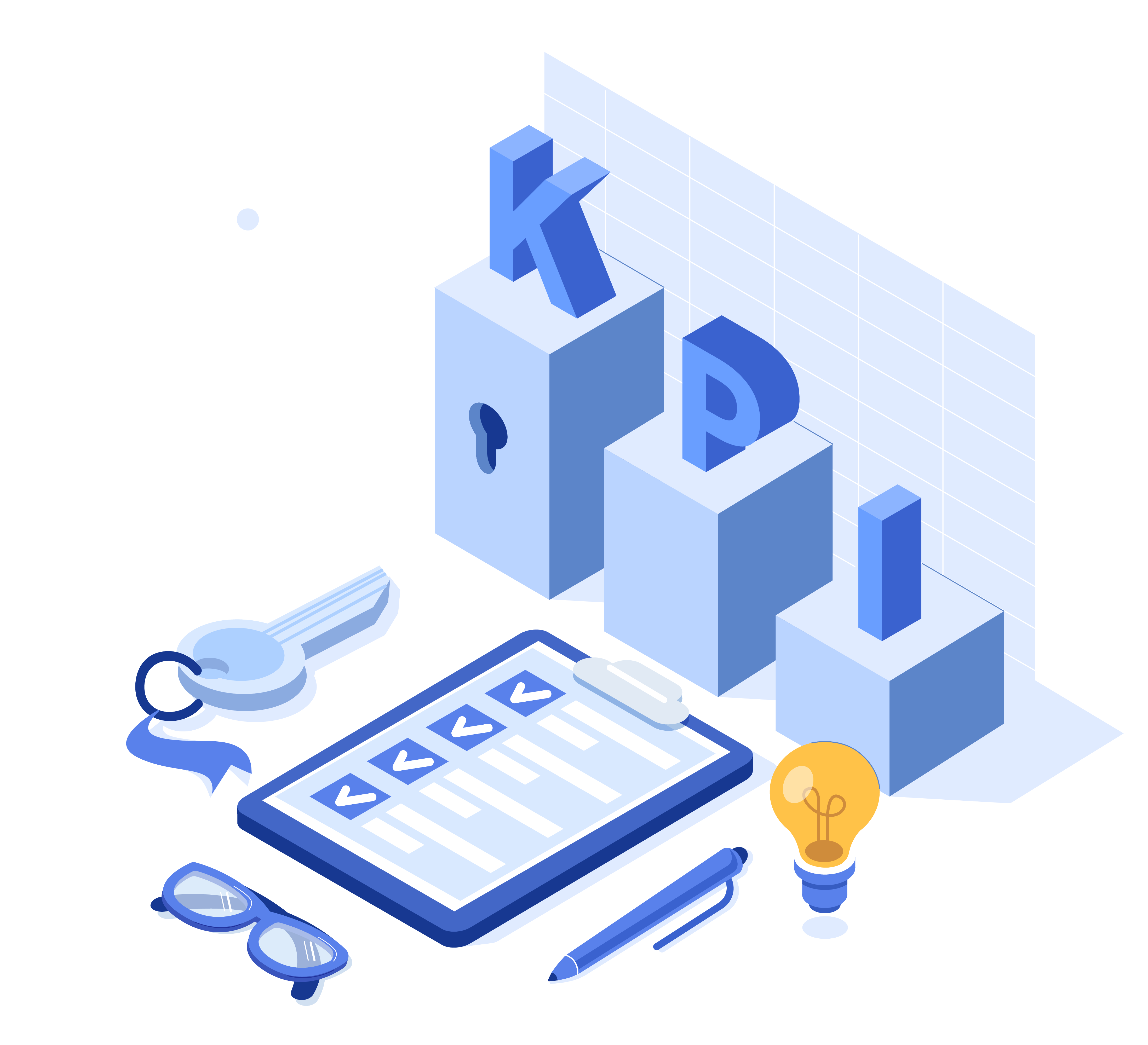Cold calling still works. In fact, cold calling is a vital part of any successful sales team. Even if you pursue an inbound lead strategy, you still need cold calling skills to make the most out of your leads. So let’s explore what cold calling means in today’s sales environment and how you can train your team on cold calling skills.
Table of Contents
There's a lot of chatter about cold calling, but here's an actionable definition: an unsolicited call made by a salesperson to a prospect that hasn’t expressed interest in the product or service being offered. Cold calling is an important component of an established sales process – and something that can be mutually beneficial for both salesperson and prospect. Cold calling to benefit a prospect may seem hard to fathom. But if it’s done right, you’re offering knowledgeable insight that can drive real change.
Part of executing cold calling properly is wielding the knowledge that sales reps have unique perspectives on and experience with. For example, sales reps will know industry shifts and changes that are impacting their prospect’s business, including the macro environment their prospects are trying to do business in. Sales reps that place cold calls also talk to more business leaders in similar circumstances than the typical prospect they are calling, which creates useful points of reference. With this information and research at the ready, a cold call can be a good opportunity to:
Align with prospects on their objectives.
Introduce a product or service within the context of their industry.
Offer insights into what challenges their peers are facing currently and how they solved them.
Begin building meaningful rapport with a potential client.
If you haven't seen these outcomes from your cold calls, you're not alone. In fact, most sales teams we work with claim that cold calling can be the most frustrating part of their sales process because they rarely see results. It can be infuriating when a sales rep keeps trying, but struggles to have a conversation with prospects or even get them to pick up the phone.

When done right however, cold calling can yield tremendous results and motivate sales reps to add new opportunities to the funnel. The skills necessary for sales reps and new sales hires to make effective cold calls are not very complex, but they are also not intuitive, and require proper training. After all, you can’t tell someone to jump higher and expect them to simply be able to do it. You need to have a regimen, plan, and training to get there and cold calling is no different. Here are a few cold calling training tips:
If your team is not already leveraging call recordings, it's worth starting immediately. Not just for cold calls, but all sales calls throughout the customer lifecycle. Sales call recordings hold a wealth of context and information that sales reps can learn from.
This is especially true for cold calls. Things often happen quickly on a cold call. During training, you can rehearse what to do in the first 10 seconds of a prospect picking up a call many times over, but there's no substitute for the intangible and invaluable information that a call recording can offer a new sales hire.
Find your best cold callers and make sure their calls are being recorded. These recordings will help you decrease ramp time for new hires and help make everyone in your organization get better by providing them a sample of what good sounds like at your organization.
Making a cold call can be nerve wracking. Even if you are a seasoned sales rep, it can be tough to start cold calling if you haven’t done much of it before. A great way to get over this is by doing cold call role plays.
This activity is an effective way for sales reps both new and seasoned to hone their skills. Be sure to use a real phone when practicing, and go into separate rooms as well. Try to recreate an environment that feels like a real cold call to make the most of this exercise.
 Hold Coaching Sessions
Hold Coaching SessionsNo matter what skill level a sales rep has, they can always benefit from coaching. Sales managers need to set aside time each week or every other week to have a one-on-one session with their reps.
When coaching cold calling skills, it is vital to have a call recording in front of you. This way you can pinpoint exactly what a caller did correctly and what they could have done better. Without this point of reference, it becomes very hard to coach cold calling skills.
If it is not possible for you to access call recordings, then managers should sit down with team members when they are making cold calls. Get a headset splitter to listen in to the conversation that your team member is having. That way, the manager has real-time knowledge of how their reps are handling cold calls. It's the next best thing to reviewing call recordings for coaching purposes.
It's not possible to provide an exhaustive course on cold calling in this blog but here are some techniques that all cold callers should be leveraging:
Do not cold call blindly. Prospects are busy and if you dial someone without knowing their role and what is important to them, you are wasting both your's and your prospect’s time. Cold calls that are made without any sort of pre-call research give sellers and the discipline of cold calling a bad reputation.
Research your prospects’ role and their company’s challenges before calling. Go beyond this and also learn something additional about your prospect. Maybe you went rival colleges, or belong to the same industry groups. This sort of information will help break the ice and get your prospect curious about what you have to say.
Keep it Professionally Personable: The more personable pre-call research you can find on your prospect, the more effective it will be. However, keep it professionally personable. Nothing turns off a prospect faster than if you share something from their home life. A general rule of thumb is if you are unsure, is to read a few posts and if it’s not related to their professional life, it’s better to avoid that source.
The Prospect Must be Surprised You Know: Prospects expectations of cold callers has increased over the years and personalization such as their role/responsibilities or what their company does no longer cuts it. When doing your pre-call research, focus on something that the prospect would be surprised you know. For example:
Instead of using "I saw you were hiring and growing your team", find out why they are hiring (they commonly share this in the job listing). Use this instead: "I took a look at your website and learned that you are growing your team to support the expansion into the European Market."
Keep Your Research to 3 Minutes or Less: Even the best cold callers don’t have a 100% connect or response rates to cold email. Therefore, spending too much time finding personalization on one prospect isn’t the best use of time.
The best cold callers know to balance efficiency with effectiveness when uncovering pre-call research. They do this by keeping their research to 3-minutes or less per prospect. This is one part of the 3x3 Research© technique that is taught to participants in Funnel Clarity’s Fearless Prospecting© course.
However, getting a prospect to be curious is not enough to have a successful cold call. The most common mistake that sales people make during a cold call is that they start talking about their own solution too much or too quickly, or begin to name drop big clients within the prospect’s industry.
This is the surest way to get a prospect disinterested in a cold call. The goal is to keep the focus on the prospect. To do this, be prepared with some insights regarding the industry or your prospect’s challenges. Follow up your insight with a question that has to do with the prospect’s own challenges. This keeps the focus on them and how a cold caller can help the prospect.
If you are cold calling different industries, types of companies or buyer roles within your target accounts, you will need to create unique messaging that shares insights into the challenges for each of those different demographics. Otherwise, you run the risk of that your prospects will immediately become disengaged during the cold call and may even immediately hang up.
Keep in mind that your industry, solutions, and buyers are constantly changing. Today’s challenges that your prospect is facing is tomorrow’s platitude. Ensure that you are revisiting your messaging at least every quarter to evolve with your market and keep things fresh.
This sort of messaging and technique helps build trust and rapport. It demonstrates to the prospect that the cold caller is concerned with challenges and solving those challenges instead of just "pitching" their product.
Over 100,000 sales calls demonstrated that prospects object on a cold call for one of the following three reasons.
Not Listening: The prospect simply was not listening and not engaged during the cold call. They were distracted the entire time you were speaking to them and gave an objection to make it seem like they were actually listening to you.
Don’t Understand: They are listening to the cold caller and perhaps asked some questions; however, they do not fully understand what the sales rep is trying to convey to them, and as a result, give an objection.
Genuinely Not Interested: The prospect paid attention during the cold call, fully understands the product/service and for a legitimate reason (such as recently signing a deal with a competitor), they object.
Sellers who are able to quickly identify which category a prospect's objection falls into on a cold call and react appropriately have a higher chance of success.
Understand the Root Cause of the Objection: As stated above, the first thing you should recognize when you receive a cold call objection is the root cause of that objection. Failure to recognize the root cause first will cause your response to fall on deaf ears.
Acknowledge, Don’t Ignore the Objection: A brief summary statement of the objection back to the prospect demonstrates you understand and heard them. By not acknowledging their objection, they will not be listening to anything else you say and will repeat their initial objection.
Use a Steady Pace: When you receive an objection on a cold call, PAUSE and take a deep breath. Speeding up your tempo and talking fast will only cause your prospect to become further disinterested.
Focus on the Value of the Meeting, Not Your Solution: The purpose of your cold calls it to get them interested enough to take a meeting, not to sell your solution. A majority of the prospects you cold call will not be in an active buying cycle. However, if done correctly, they likely would be willing to speak about the current challenges that will eventually lead to them to an active buying cycle.
Always have a Next Action: You have the prospect on the phone, make the best use of that time. If you’re unable to secure a calendar appointment, always have a second and third next action that you can take with them so that the cold call is still productive. For example:
"Typically when someone asks for this type of information, they usually have specific questions and how that applies to their situation. Let’s find time next week where we can go over this together and I will be sure to attach the information to the calendar invite."
"I would be happy to send you the requested information, if I don’t hear back from you by the 7th, would it be alright if I reach back out then?"
"Due to end of year projects, you’re unable to meet until January. Is it alright if we find time during the second week of January as a placeholder for us to reconnect?"
"I completely understand that you just signed with one of our competitors. Would it be alright I periodically send you over some relevant information?"
Practice the 3 Most Common Objections You Hear: When you make cold calls on a consistent basis, you begin to notice patterns of objections you hear. Select the top three most common objections and role play them with your peers/manager. This helps you become more prepared and confident in the delivery of handling objections.
You may be surprised to learn that successful cold calling often begins with speaking to switchboards and admins. The best prospectors don’t view people in these positions as an impediment or a gatekeeper to their prospects, instead, they leverage them to the fullest.
Switchboards and admins have a wealth of information, such as direct lines, correct email addresses, org charts, current initiatives, who holds the responsibility for purchasing their products/services, etc.
(Side note: It’s important to note that switchboards and admins hold different areas of responsibility, and thus require a different approach.)

Cold calling can sometimes feel like a never-ending to-do list, and let’s face it: the actual call is challenging enough without the process weighing you down. That’s where technology steps in. With the right tools in your corner, cold calling shifts from being a tedious chore to a strategic and efficient part of your sales process.
Dialing Software: This is your go-to for eliminating inefficiencies. It connects directly to your CRM or lead database, ensuring no more misdialed numbers or dialing numbers manually. This means more time focused on connecting with prospects.
Sales Engagement Software: Struggling to keep track of follow-ups or wondering how well your outreach is working? Sales engagement tools bring everything together. They manage your calls, emails, and other touch points across platforms while tracking key metrics like call outcomes and response rates. If a lead doesn’t pick up, the system ensures you stay on top of follow-ups without letting anything slip through the cracks.
Conversation Intelligence Software: This tool is a game-changer. Beyond simply recording calls, it uses AI to analyze conversations, identifying patterns in what's working and what's not. It highlights common objections, moments of connection, and opportunities for improvement. Plus, it transcribes calls automatically, saving you hours of post-call admin and helping you focus on what moves the needle: building relationships.
*Before implementing, be sure to research your Country, State and local call recording consent laws as they differ by location.
If you’ve decided that your team needs comprehensive cold calling training, then it is time to pick a cold calling course. Here are a few things you should pay attention to when selecting the right cold calling training course for your team:
Unfortunately there are a lot of cold calling courses out there that are based on opinions rather than science. Many courses will claim that their techniques work but you should probe to find out whether the best practices are derived from someone’s opinion of what worked for them or if the cold calling best practices emerged from real field research.
The difference can mean success or failure for your team. If the best practices are backed by actual field research, you can be confident that the training will be successful as long as the participants follow through on what is taught. When best practices are based on what worked for just one or two people, there is no guarantee that the course will provide skills that are suitable and successful for everyone.
It’s one thing to hear what you should do. It's entirely another thing to also have an example of what execution sounds and looks like. It is notoriously difficult for adults to learn new things and adopt new habits.
For adults to adopt new skills, they need to learn skills in context. Therefore, whenever a training course teaches a new concept, it must be followed by an example of what execution sounds like. Make sure the training course you pick comes with plenty of real examples for sales reps to emulate.
In addition to the course providing real examples of the successful tactics on a cold call, it’s also critically important the training is experiential. Adults learn most effectively through doing. Sitting in a classroom or online and listening to a lecturer go on and on is not an efficient way to learn new cold calling skills.
Effective training should incorporate exercises throughout that ask the prospector to go on out and try what they are doing on actual prospects. This ensures they begin to adopt these new techniques during training and start seeing results immediately.
As mentioned above, it is difficult to get adults to adopt new habits. It’s not enough to just teach them something new and expect them to turn it into a new habit. That requires consistent and well planned reinforcement after the initial learning period is over.
Reinforcement is perhaps the most important part of any cold calling training course. This is where ROI is realized and skills don’t turn into habits. Whoever you decide to work with, make sure they have a reinforcement plan that can ensure long-term success.
Managers and coaches spend most of their time with their sellers – both in scheduled coaching sessions and informally throughout the day. They must be equipped with resources and coaching aides that enable them to coach effectively. These coaching materials must also be formatted and flexible enough to have the managers/coaches integrate it with what they are currently doing with as a little friction as possible.
In addition to coaching resources, access to metrics that track your team will ensure the coaching and support is being put to the best and highest use. With all the various sales tools available today, it can be overwhelming to know what the most useful metrics are to measure for cold calling. The metrics that matter most are in the following areas:
The nature of the cold calling role is that people hired will likely move up within the company or find another job. The average tenure of an SDR is about 18 months. To develop a strong team culture around cold calling, everyone should be trained in the same manner and use the same terminology.
The cold calling training course provider you pick should be able to easily onboard your new hires as they enter your company. If you have to train new hires on something different each time someone comes on-board, it will create confusion and prevent sales reps from helping each other since they will be used to different processes and terminology.

The benchmarks discussed here are for SDRs who are pursuing a fully outbound strategy. The top 5% of SDRs/BDAs secure 6.7 scheduled meetings per week on average. However, they don’t agonize over their results. The key to achieving those results is by focusing on activities that you can control. Here is a list of activities and benchmarks to shoot for:
An average of 603.9 dials (calls placed) per week (120.8 per day)
An average of 57 new contacts added to the prospecting list per week (11.4 per day)
At least 81.6% of active contacts* have direct lines in the contact record
At least 95.4% of active contacts* have pre-call research in the contact record
*Active contacts refers to prospects that the seller is currently pursuing at a given time
Cold calling can provide tremendous results for your team but it has to be done right. If you let your sales reps dial blindly, they’ll stop trying because they will seldom find success. This could lead to inconsistent performance, lack of new opportunities at the top of the funnel and inaccurate forecasts (to name a few). We can help you prevent these unfortunate results and make sure your team has the tools and skills they need to cold call successfully; schedule a free 30-minute consultation with Funnel Clarity today!

Discover your strengths, weaknesses and how to smash your team's quota.

Tyler Vance works closely with the participants and managers of Funnel Clarity’s training programs to ensure they achieve their expected results. Throughout Tyler’s career, he has experienced both a seller’s and buyer’s point of view bringing a unique perspective when working closely with Funnel Clarity clients. Whether Tyler is answering questions from participants, running a coaching session, webinar series, or working with managers to develop a reinforcement plan, he brings a unique and fun element into every part of his role.